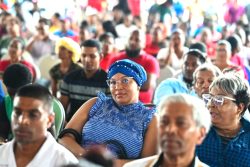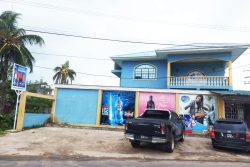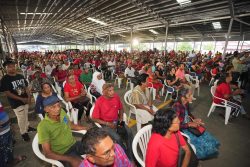What is the matter with the Anglican Church, one wonders. How can it put up one of its older places of worship for sale without exploring the possibilities for how it could be saved? The Diocesan authorities simply placed an advertisement in the newspapers saying they proposed to “dispose by sale by public tender” of a property “with the building (St. Barna-bas Church) thereon.” It is described as “prime property,” which in a commercial sense, indeed it is. Of course all that will happen is that whoever buys it will destroy the church and erect some concrete barracks in its place, erasing a part of the history of the area in the process.
Whether anyone would be prepared to buy it and use the church building for secular purposes does not seem to be something that has been investigated as far as can be seen. Of course it has to be conceded that in this country that may not be a viable proposition unless the government were to take it over and use it as a school, for example. Certainly in the UK, many churches have been closed, and provided they are not listed, have had their interiors converted to other uses, such as apartments for housing purposes.
The Anglican Church, one presumes, operates with a very modest budget, and one can understand the strain on its resources of a church with a dwindling congregation, and a churchyard frequented by vagrants and drug addicts. However, the Diocese has a responsibility to the nation and not just the Anglican community when a building under its control constitutes a part of the heritage. St Barnabas, it must be said, is a slightly eccentric church building, not altogether typical of nineteenth century Anglican edifices in this country. Nevertheless, that is part of its attraction.
That aside, the church is sited in a historic area of the city, which if the government had the will and the imagination could be made into a zone of interest for tourism purposes. But the Ministry of Tourism, while mouthing soothing noises has never made any serious effort to encourage historical tourism, and do the kind of work which would be necessary to develop the industry.
As is generally known, Bourda was originally part of Plantation Vlissengen, which in its later days, at least, was a coffee plantation. The name of the ward derives from its owner, Joseph Bourda, and what is now Regent Street was the Middle Walk of his estate and was planted with citrus trees on both sides. City Hall is thought to stand somewhere on or near the site of the plantation’s coffee logie, although in the years after agricultural activities ceased, that structure acquired a less salubrious reputation. The plantation’s cemetery – the only estate cemetery to survive (barely) in Georgetown and one of the very few in the country – is sited immediately opposite the present market.
The government laid out the lots in Bourda ward in the nineteenth century with the intention that small artisans and tradesmen could build houses there; it was for the urban working classes, one might say. A new housing scheme, which Bourda was in those days, requires amenities, hence the market which the National Trust says was erected in 1880. Arrangements for the residents’ spiritual needs followed four years later with the building of St Barnabas. There is local history in that area, therefore, to be explored, and St Barnabas has a role in it.
Guyana is not like Europe or India or North Africa or the Middle East or parts of Asia and Latin America, with a plethora of heritage buildings and sites preserved for the benefit of current and future generations. Our material heritage has not survived well as a consequence of the climate, the building materials and the termites. As a general rule it takes more work and effort to preserve a structure in the tropics than in a temperate zone. Having said that, however, much of the destruction that has gone on in this country has been wilful, and in Georgetown, at least, a good deal of it has happened in the last few decades. Forty years or so ago one could walk down many streets in the capital and see house after house, both modest and large-scale, which reflected the characteristic Guyanese style created by the nineteenth-century carpenters. Not any more.
And the religious authorities of various faiths have not always displayed the respect for their own material heritage one might have hoped. The beautiful Guyanese wooden Hindu temples with their lacy fretwork – with one or two exceptions, such as at Providence – have now been replaced by non-indigenous styles. The simple lines of the Moslem mosque in Church Street (which admittedly had already been expanded at some point in the past when the balustrading was removed) have now been obliterated completely. In this instance, the concern was that the mosque could not accommodate the congregation which had grown substantially over the years. However, the fact that in order to expand the area of worship Georgetown’s first mosque would have to be destroyed, does not seem to have been a consideration which weighed too heavily with the religious authorities concerned.
And then there was the rather different case of the Sacred Heart Church in Main Street, which was not intentionally demolished, but which burnt down as a consequence of what can only be described as carelessness. The fact of the matter is that many of Guyana’s religious buildings are more than just places of worship for particular faiths; they are part of the nation’s historical landscape, and have importance for the entire population and not just the worshippers who are associated with them.
As things stand, one suspects it is too late for St Barnabas Church, and another part of the nation’s material heritage is on the verge of falling victim to the wrecker’s hammer. One is only left to wonder whether this decision was taken within the country, or by the Anglican powers-that-be in the Caribbean. If the latter, what kind of a case did the local representatives put up to save the building – or did they not make any attempt at a case? Since the advertisement was published, and the issue has come into the light of day, they have been very reticent. One hopes they feel acutely embarrassed, because if they aren’t, they should be.









